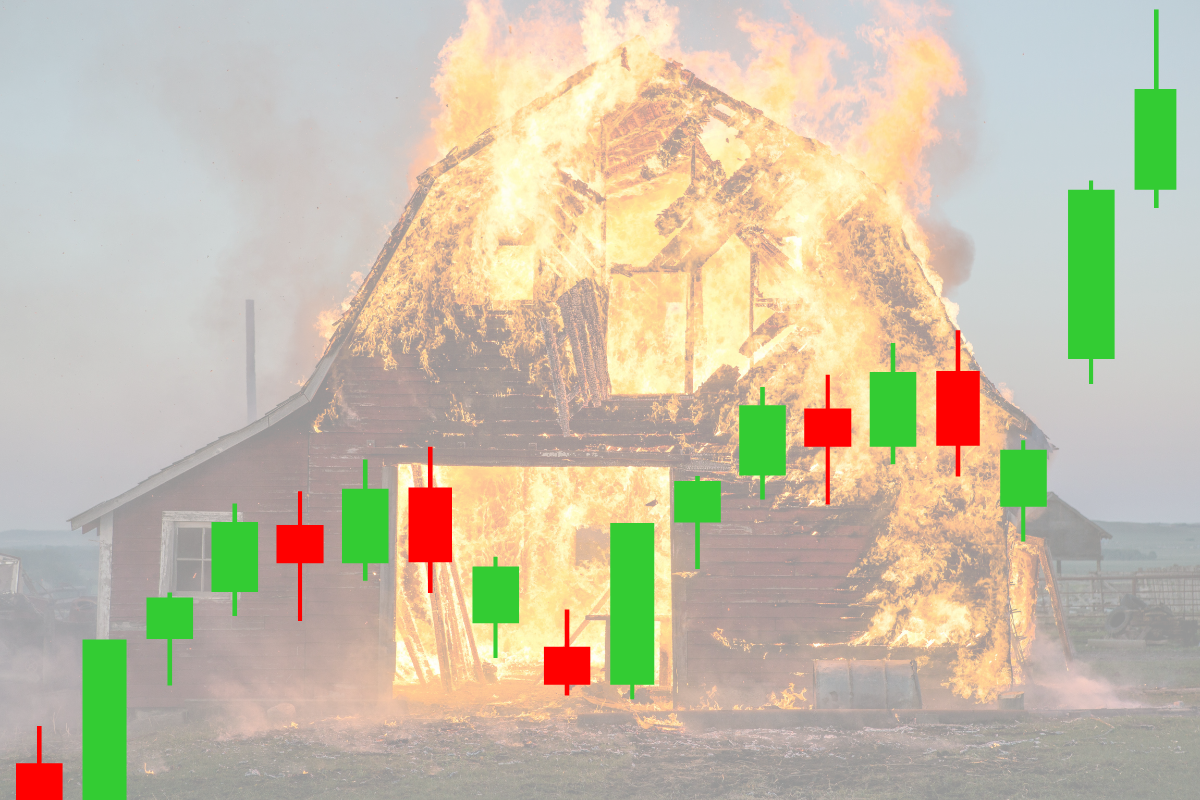

Sometimes it's hard to find who's to blame in a complex situation. This time it's easy: the global internet outage from earlier in the week was caused by Amazon. And yet, despite the outage, Amazon was rewarded the next day with gains on the market. What gives?
If you're not familiar with Amazon Web Services (known colloquially as AWS), it may sound a little confusing to think that an e-commerce platform took down a large swath of the internet on Monday night. Amazon's most well-known business is in selling everything from books to bog roll, but in the background, it's the global leader in cloud computing services by revenue.
And in case you were living under a rock, an issue with AWS infrastructure in the US meant that hundreds of popular services were unavailable for over 12 hours on Monday night. For what it's worth, AWS insists the outage was only around three hours, but the global internet instability could be felt for long after that. Some services aren't even back to normal operations just yet, as they work to process the backlog of data, requests and posts users made during that time. Our newsletter service at Switzer still shows a big red box on the screen apologising for delays and issues with service at the time of writing and that's almost 24-hours later!
The issue is one that we've seen before, too. An issue in its Virginia-based datacenter, known as US-EAST-1 saw the world grind to a halt. A system designed to facilitate the correct lookup of server addresses and forward on the traffic fell over, and the problems domino-ed from there.
I'm not kidding when I say it felt like half the internet. The list is a who's who of internet-enabled services. From streaming a movie to ordering a ride right through to just getting the news, the AWS outage took out a huge chunk of the 'net.
Here's a list I found of about 70 or so services that were affected, and it is by no means comprehensive:
Amazon $AMZN's AWS is still down.
Here are some of the sites affected:
Adobe Creative Cloud
Airtable
Amazon (incl. Alexa & Prime Video)
Apple Music
Asana
AT&T
Battlefield (EA)
Blink (Security)
Boost Mobile
Canva
ChatGPT
Chime
Coinbase
CollegeBoard
Dead By Daylight
Delta Air…— unusual_whales (@unusual_whales) October 20, 2025
I could go on and on and on (and on and on and on, trust me).
Two affected services I wanted to call out by name, though. The first is EightSleep, which sells a truly-excellent (and very pricey) temperature control system and sleep monitoring rig for your bed. Because it reportedly used AWS infrastructure to track your sleep and make changes throughout the night to keep you warmer or cooler, many customers woke up either sweltering or freezing.
And many report not being able to change their bed settings during the outage, which means Amazon Web Services basically kicked these people out of their own beds for the night!
For what it's worth, the CEO has apologised and promised to 'outage-proof' the device. Yes: outage-proof your bed. Welcome to the future.
The other affected service of note was NYT Games. Nobody takes my Wordle away and gets away with it.
Millions were affected. Billions in productivity was probably lost. Gadget-lovers got a bad night's sleep. And yet, during yesterday's session on the NASDAQ, Amazon not only closed up, but it closed higher than the index itself for the day's trade.
It's a typical trend that when a company experiences an outage or some kind of public mishap that impacts customers, the repercussions are felt in their stock prices.
When Google unveiled its first AI product, known as Bard, it was a disaster. An on-stage meltdown at a time when it needed to impress saw the stock dive by 9%. That's about $100 billion in market cap over a bad app.
Crowdstrike recently triggered a Windows malfunction which saw machines in hospitals, banks, airports, and more go offline for almost 24 hours. That took it down 11%, and left a stench that continued to linger right into its next quarter's results.
Facebook once went down for six hours and it ate into Mark Zuckerberg's personal pool of golden coins to the tune of $6 billion for him and almost $50 billion for the social monolith he founded.
So why didn't Amazon, the company that took out half of the internet for almost 15 hours, experience the same sort of pain? See below for its gravity-defying performance.
You see, Amazon didn't lose the billions everyone expected it to during the first session of the US week. Instead, it added 1.6% in value, closing at $216.48, up from $214 at the open. That's compared to the NASDAQ composite putting on 1.37% in the same session.
My theory - and it's just a theory, after all - is deceptively simple: the outage became a marketing exercise.
Amazon Web Services can crow all it wants about having some of the biggest clients on the 'net living in its data centres. But many customers don't want their name bandied about by another company for the sake of branding.
But when the plug gets kicked out of the wall in one place, everyone's cards are on the table. And now, Amazon Web Services reveals all of its high-profile clients in one fell swoop.
The market follows power closest of all. And having the power over the World Wide Web in the way that Amazon Web Services does made investors sit up and take notice. And with Amazon's next earnings report due in just over a week, I'm sure investors can't wait to hear how CEO Andy Jassey will explain this one away.
Welcome to the upside-down, I guess?